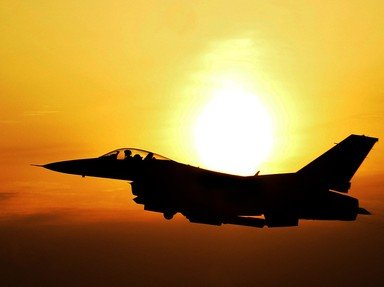Quiz Answer Key and Fun Facts
1. The Mikoyan-Gurevich aircraft company produced some of the most formidable Soviet jet aircraft to fight in the many wars of the 20th century - the MiGs. NATO intelligence assigned them new (English) names. Which of the following was NOT the NATO nickname for a MiG fighter?
2. The French aircraft company "Dassault-Breguet" produced France's most successful line of Jet Fighters, the Mirages. All Mirage fighters were designed with the distinctly triangular Delta-Wing configuration.
3. The Israeli Aircraft Industries produced several aircraft based on the French Mirage, after France put a stop to military cooperation between the two countries. Which of the following is NOT one of the fighter aircraft designs created by Israel after its relations with France went sour?
4. While close-support for ground troops was eventually delegated to "Rotary Wing Aircraft", also known as Helicopters, some jet aircraft were specifically designed to provide anti-tank support on the battlefield. Which of these aircraft is NOT designed for such a role?
5. Most aircraft aficionados will instantly recognize the "Blackbird", a super-sonic jet with some stealth properties, designed to fly at extremely high altitudes while taking pictures. Which American company was responsible for producing this massive reconnaissance aircraft?
6. Which of the following car manufacturers was never involved in the production of aircraft or aircraft parts, at any time during the 20th century?
7. American Fighter Jets are usually designated by the letter "F" followed by a number. Due to the specific process of defense-contracting in the United States, some of the numbers have gone unused. Of the following models, which aircraft actually went on to military production and use?
8. The founder of one of the leading American aerospace companies was infatuated with the idea of a Flying Wing - an aircraft comprised of a single aerodynamic shape, with no outstanding fuselage. Which company did he found?
9. While jet power has certainly become the dominant means of propulsion for aircraft in the latter half of the 20th century, some civilian and military aircraft still held a potential application for propeller-driven engines. Which of the following aircraft has propellers instead of jets?
10. Which of the following aircraft does not have any sort of weaponry for aerial combat?
Source: Author
Headrock
This quiz was reviewed by FunTrivia editor
gtho4 before going online.
Any errors found in FunTrivia content are routinely corrected through our feedback system.

